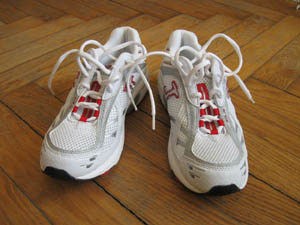
More evidence that low-calorie sweeteners are bad for your health
Studies show that artificial sweeteners can raise the risk of hypertension, metabolic syndrome, type 2 diabetes and heart disease, including stroke.

Natural Health News — Walking briskly can lower your risk of high blood pressure, high cholesterol and diabetes as much as running can.
Researchers, writing in the journal Arteriosclerosis, Thrombosis and Vascular Biology drew their conclusions from analysing 33,060 runners in the National Runners’ Health Study and 15,045 walkers in the National Walkers’ Health Study.
Study participants were 18 to 80 years old, and tended to be in their 40s and 50s; 21% of the walkers and 51.4% of the runners were men.
The researchers found that the same energy expenditure used for moderate intensity walking and vigorous intensity running resulted in similar reductions in risk for high blood pressure, high cholesterol, diabetes, and possibly coronary heart disease over a period of six years.
“Walking and running provide an ideal test of the health benefits of moderate-intensity walking and vigorous-intensity running because they involve the same muscle groups and the same activities performed at different intensities,” said Paul T. Williams, PhD, the study’s principal author and staff scientist at Lawrence Berkeley National Laboratory, Life Science Division in Berkeley, California.
Measurable benefits from walking
Comparing energy expenditure to the incidence of diagnosed hypertension, high cholesterol, diabetes and coronary heart disease, researchers found:
“Walking may be a more sustainable activity for some people when compared to running, however, those who choose running end up exercising twice as much as those that choose walking. This is probably because they can do twice as much in an hour,” Williams said.
“People are always looking for an excuse not to exercise, but now they have a straightforward choice to run or to walk and invest in their future health,” he added.
Previous research
This is not the first study to show benefits for brisk walkers. As far back as 1999 the New England Journal of Medicine found that that brisk walking can reduce the risk of fatal and non-fatal heart attacks in women to the same degree as vigorous exercise.
In 2011 scientists at University of California, San Francisco and the Harvard School of Public Health found that brisk walking — at least three miles per hour — for at least three hours per week lowered risk of prostate cancer progression by nearly 60%.
In 2012 Danish researchers reporting in BMJ Open also concluded that the intensity of the walk was key to lowering the risk of metabolic syndrome. Fast walking speed halved the risk, while jogging cut the risk by 40%. Simply going for an hour’s walk every day made no difference.

Please subscribe me to your newsletter mailing list. I have read the
privacy statement